Chinese ethnocultural food beliefs and practices during the perinatal period.
General health beliefs
Women placed a great deal of importance on being healthy and believed that one's health was dependent on consuming healthy foods, living an active and emotionally-balanced lifestyle and getting enough rest. Women's conceptualizations of health were largely holistic, incorporating both the body and mind as well as both individual and social components. The latter point is important, as the individual is not understood to stand alone, but is integrated in their family and community, and their well-being is affected by these social relationships.
How food affects health
Balanced eating was important for health; eating too much of one thing affects balance. Fresh foods were preferred, and leftovers or preserved foods were avoided. Women also believed that their actions and food practices would have a direct effect on their baby. Women generally believed that they need to eat more for the benefit of their developing child. Women would often eat more frequently and double their consumption of certain foods thought to be especially healthy during the perinatal period, such as milk, fruit and eggs.
Chinese women made food choices based on Traditional Chinese medicine (TCM) which centers on the concepts of ying and yang and the desire to maintain balance within the body. In TCM, foods are grouped into “hot”, “cold’ and “neutral” based on their perceived effect on the body rather than their physical temperature. Note that “hot,” “cold” and “neutral” are on a spectrum rather than being three distinct and separate categories. Women in the study also referred to the “hotness” and “coldness” of foods in terms of temperature and this was also a factor in what foods they chose. In general, women avoided foods and drinks that were cold in temperature throughout the perinatal period, instead consuming foods that were at least room-temperature.
During pregnancy, women avoid hot foods as the body is already in a hot state and must be balanced. Consumption of hot foods during this period can be dangerous for the baby and can cause the woman to become sick. Fruits that are red or orange in color are especially associated with heating effects (e.g. lychee, oranges, and cherries). Other hot foods include spicy food, sweet foods, and deep fried foods. However, foods that are too far on the other end of the spectrum must also be avoided. Cold foods mentioned as dangerous to consume during pregnancy included seafood (especially crab), certain fruits such as watermelon, and herbal tea. Neutral foods are recommended throughout the perinatal period. Examples of neutral foods include grapes and goji berries.
Following pregnancy, it is very important to consume hot foods because the body is “opened up” and susceptible to cold and subsequent poor health. Hot foods promote healing, provide energy, and help to balance the body, and include certain vegetables and fruits (such as mustard greens, lychee, and red dates), soup (especially chicken), ginger, and deep-fried foods. Foods that are black in color were also mentioned to be important ‘hot’ foods to consume postpartum. Foods mentioned included black vinegar, black sugar, and black Silkie chicken. It is very important to avoid cold foods especially for the first month after birth as they can promote bleeding and inhibit lactation. Women also preferred to eat warm or room-temperature foods and avoid cold temperature foods throughout the perinatal period as these can cause overall poor health for mother and baby.
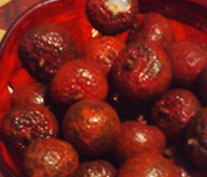
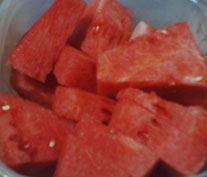
During pregnancy, women chose foods based on the belief that they were generally healthy, contained minerals and nutrients needed for pregnancy (especially calcium, protein and iron), and would have beneficial effects on the fetus. These purported effects were often related to physical appearance (especially skin), indicating the value of beauty in Chinese culture. Soup was commonly consumed because it is light and easy to digest, and some also thought it positively affected the skin of the infant. Some women also discussed the belief that consuming eggs, bird (swallow) saliva, and white fungus would result in a baby with light-colored, beautiful skin. Rice is commonly consumed, especially in porridge form (known as congee), as it is considered easy to digest.
Fruit and vegetables were consumed more frequently and in greater amounts during pregnancy due to being healthy and nutritious for the mother and fetus. Similarly, milk and milk products were consumed due to its purported beneficial effects on a developing baby. Many women incorporated dairy products into their diet only during pregnancy. Meat and eggs (including quail eggs) were consumed often for protein intake. Consumption of nuts and black sesame was recommended by some women, as they are thought to be beneficial for fetal brain development and hair growth.
Foods Avoided During Pregnancy
Women also chose to avoid certain foods due to the belief that they are unhealthy in general, can produce specific side effects (such as sore throat and sickness), can cause miscarriage, and can have negative effects on the baby. Junk food and fast food were mentioned as unhealthy food options and were avoided by many women. Similarly, deep fried and oily foods were considered to be unhealthy to consume as they contain too much fat, oil and calories and are bad for the baby. Coffee, tea and other caffeinated beverages were also considered unhealthy for pregnant women to consume. One woman connected caffeine with beauty of the child, noting that such beverages may give the baby a dark skin color which is less desirable in terms of beauty. Alcohol is another beverage that was to be avoided, as it can cause miscarriage and can also have negative effects on the baby.
Raw foods were also avoided by some pregnant women as they were viewed as unsafe. This includes not only raw meats, such as sushi, but also raw vegetables.
Chinese herbs were viewed as potentially dangerous, and some, such as job’s tears seed and black fungus, were believed to cause miscarriage. Other foods that could cause problems included lamb, which could cause epilepsy, rabbit and snake, which could cause skin problems, and bananas, which could cause asthma. Fish was avoided by some because of fear of contamination by mercury.

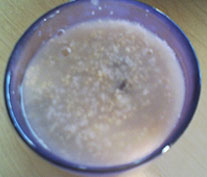
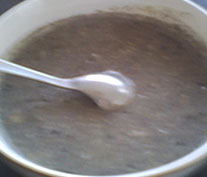
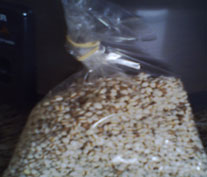
Women believe that the body is in a weak and strained state postnatal. As such, they need to eat restorative foods that will give them energy, help their uterus contract, and aid them in shedding bad blood. Women also make food choices based on the belief that they will aid in lactation and will have a positive influence on their baby.
Especially important following birth was the consumption of soup. Prepared with vegetables, fish, meat, and/or bones, soup is an important component of the postnatal diet, as it helps with the mother’s recovery from birth and aids lactation. Soups and other postnatal dishes often incorporate foods traditionally thought to help in this process such as rice wine alcohol, black fungus, black vinegar, ginger, and daylily flowers.
Foods to avoid postnatally are those that are thought to inhibit lactation, such as salty foods, or inhibit the mother’s recovery, such as water and some fruits and vegetables.
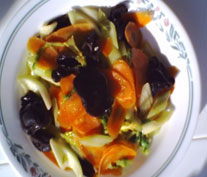
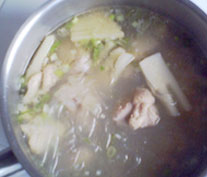
Differences in Food Practices and Beliefs Based on Area of Origin in China
Differences in health beliefs and practices occur within China, and this affects how women eat during the perinatal period. The most notable differences were found between immigrants from the North and South of China. In the Southern regions of China, women generally consume more soup and avoid raw vegetables. In the Northern regions, women generally consume more spicy, salty, and oily foods. Foods avoided also vary. For example, Chinese women from Southern regions avoid lamb during pregnancy but those from the North do not. Similarly, Southern Chinese women will avoid black fungus during pregnancy but those from the North do not necessarily follow this practice.